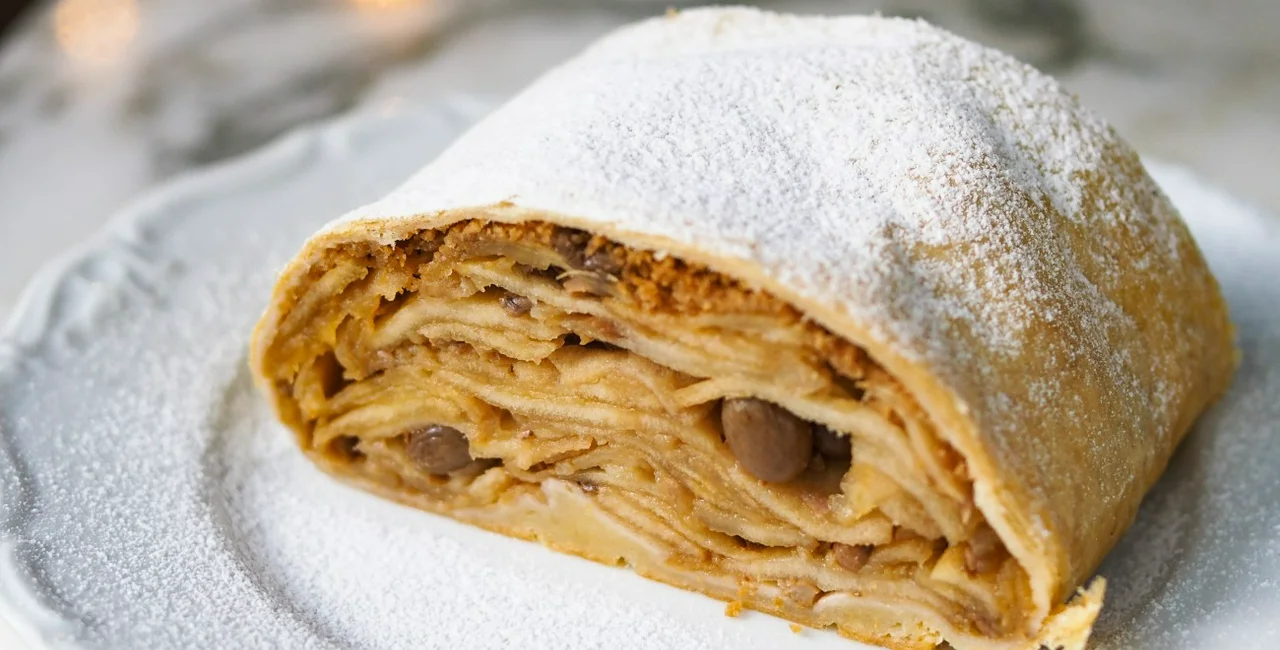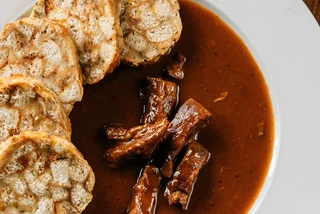Two things are absolutely essential when making an apple strudel (known as jablečný štrúdl or závin in Czech) – the dough and the apples. How do today's professional confectioners approach this traditional dessert and what can you learn about strudel in cookbooks from past centuries?
Apple strudel has as many levels of flavor as there are varieties of apples in Czechia. The dough itself also has several variations: You can wrap the filling in stretched, rolled, or boiled dough. The most frequently used type of dough is puff pastry.
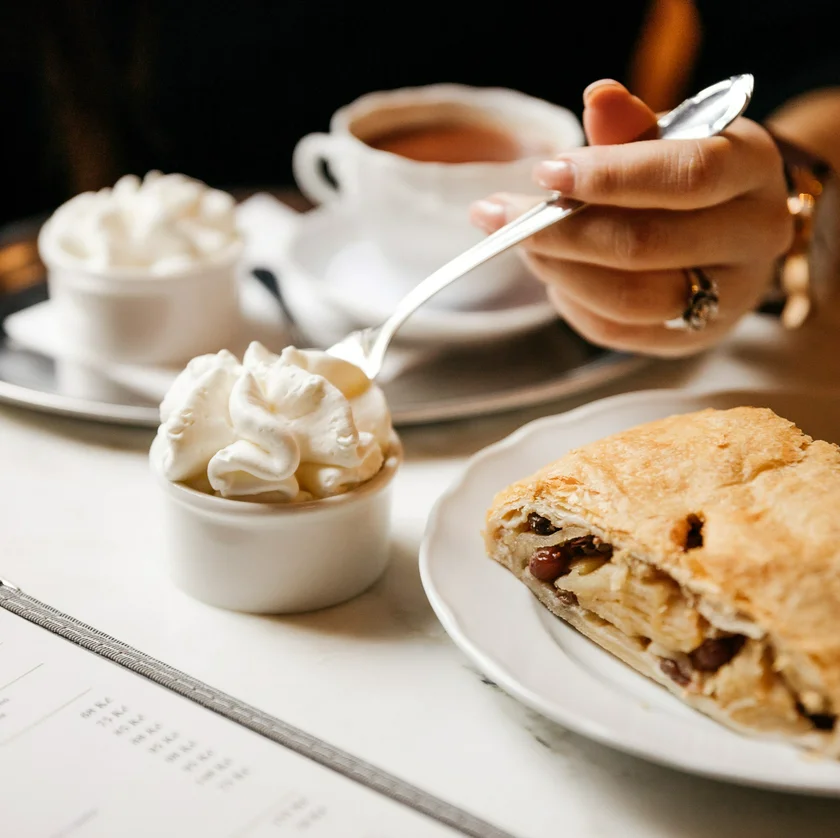
Strudel: A 'whirlpool' with Ottoman origins
Strudel most likely came to Europe during the military campaigns of the Ottomans. Its origins can be traced to the Balkans and Hungary, which fell under the Ottoman rule for centuries. This is how strudel made its way to the heart of the Habsburg Monarchy in Vienna, where local pastry chefs began to fill and roll it as is still done today. The German word strudel translates as "whirlpool," and refers to the baking process.
The oldest preserved, handwritten recipe for the pastry is Mülch Raimb Strudl (milk cream strudel) which dates back to a cookbook from 1696. Countless recipes for sweet and savory strudels were born in Austro-Hungarian cuisine over time, and strudel dough was also used as an ingredient in soups. The standout remains the Viennese apple strudel – a star of aristocratic salons, which eventually became popular in country kitchens as well.
The pastry chefs from Prague's Myšák confectionary take us through each step of their secret recipe, in order to give you the best combination of fruit, nuts, and buttery puff pastry.
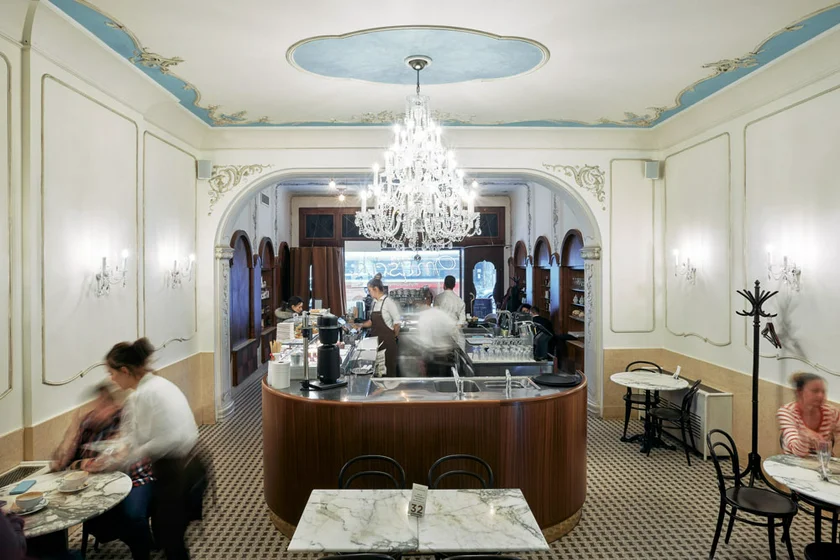
STRUDEL SHORTCUT: Making homemade puff pastry (in Czech listové těsto) is quite the chore. You can also buy pre-made puff pastry online from Myšák Cukrárna.
ingredients
Puff pastry consists of two parts: the dough portion or détrempe, and the fat block or beurrage.
For the fat block or (beurrage)
500 g of butter
225 g plain flour
For the dough portion (détrempe)
500 g plain flour
10 g of salt
10 g of vinegar (to prevent butter from being absorbed into the water)
70 g of butter
85 ml of water
160 g of whipped cream and egg yolks (1:1 ratio), for brushing
For the filling
800 g of grated apples (a tart variety with firm flesh like Granny Smith, Green Delicious, or Ligol)
Breadcrumbs (brioche crumbs are particularly tasty), to sprinkle over apples
Raisins, walnuts, or farmer's cheese to taste (optional)
method
Puff pastry
- 1.To make the 'fat block' cut the cold butter into cubes and whiz together with the flour in a food processor. Shape into a rectangle about 2 cm thick and refrigerate wrapped in parchment paper.
- 2.Next combine all of the ingredients for the dough portion in a bowl and mix until a smooth dough is formed, about 5 minutes. Wrap the dough in cling film and refrigerate.
- 3.Roll the chilled dough portion into two strips, forming a cross, and place the butter dough in the middle. Wrap the fat block in the dough portion roll out an oblong rectangle.
- 4.Refold the dough and roll it into a rectangle three times. Repeat the process two more times and then four more times.
- 5.Roll out the resulting dough into a rectangle, add the filling, and wrap it up.
BAKER'S TIP Pay attention to temperature. A fat block that's too soft won't form the correct sheeting, while a hard cube can cause dough to crack and may leak during baking. The dough portion should be cold, as warm dough speeds up the softening of the butter.
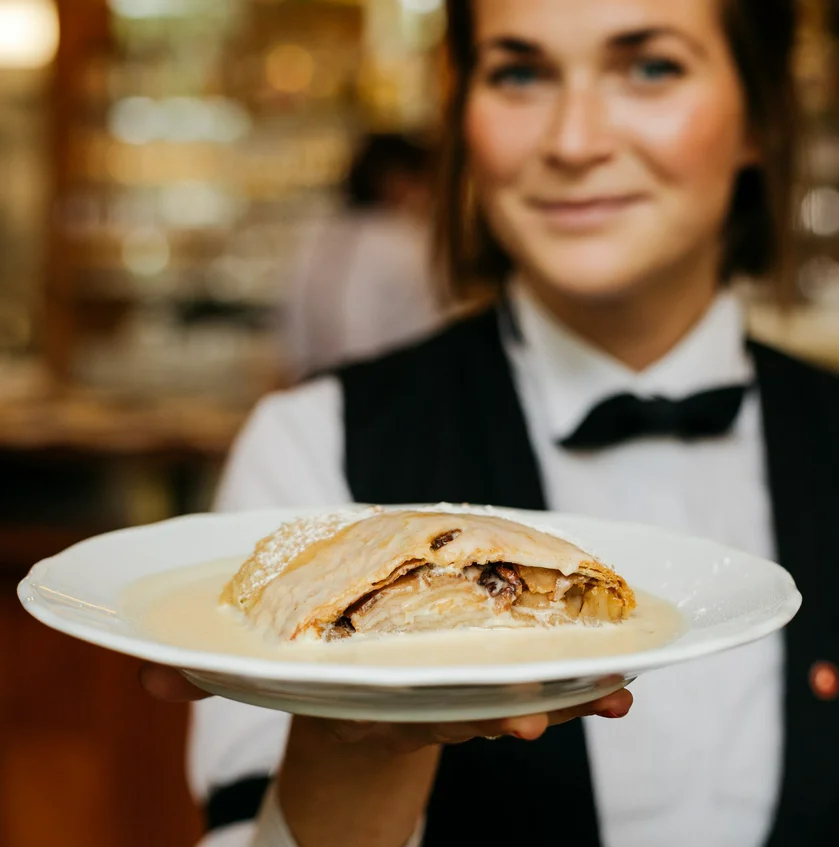
Filling
- 1.Peel the apples and shred or cut into matchsticks or dice. Let them sit for up to an hour to release the juices. Before combining other ingredients, gently squeeze apples to avoid dough-tearing steam when baking.
- 2.If you are soaking raisins in rum, combine and let sit for 30 minutes. Then discard he rum and add the raisins to the filling. Nuts should be finely blanched and finely chopped.
- 3.Breadcrumbs are sprinkled on the apples once you've piled them onto the dough.
BAKER'S TIP Take the chilled puff pastry out of the fridge the moment you have the filling ready and work quickly, because the pastry should be pliable and cold so it doesn't melt under your hands.
Baking
- 1.Preheat the oven to 170°C.
- 2.Make diagonal cuts the entire length of the wrapped strudel before baking (this helps release steam which can cause accumulated fruit juices to overflow).
- 3.Brush with glaze (the egg yolks give it a golden color) and bake for 35 minutes.
- 4.Serve chilled or still warm with a dusting of powdered sugar, whipped cream, vanilla ice cream, or crème anglaise.
More strudel tips from the pastry chefs at Myšák
- In some cuisines, towards the end of baking, the strudel is drizzled with slightly warmed honey or sprinkled with sugar to caramelize the surface.
- Dip raisins in rum together with prunes, sour cherries or dried apple slice, which will enhance the apple flavor. Tradition does not prevent adding cranberries or various types of nuts to the filling, such as hazelnuts, pecans or almonds. For a change, mix the cooked apples with the dried apple slices, which are then added into the apple mixture.
- You can first caramelize the apples in sugar and vanilla sugar and then mix with raisins, nuts and cinnamon right in the pan. A drop of apple cider vinegar gives the cooled mixture an excellent tang.
- Spices for strudel are worth buying in organic quality and grinding them just before baking for a lovely aroma.
- Gingerbread spices mixed with star anise, allspice, anise, cardamom, coriander and fennel, ground cinnamon and cloves can also be added to the strudel filling.
Recipe courtesy of Ambiente confectioners Jiří Marhold, Marie B. Svobodová, Kulinarisches Erbe
In the Czech Kitchen is a weekly column written in cooperation with the culinary experts from Ambiente. Established in 1995, the Prague-based collective of pubs, restaurants, and fine-dining outlets has transformed the Czech culinary landscape and lent to the widespread awareness of quality food service and production in Czechia. Follow their socials or book your table at www.ambi.cz.












 Reading time: 5 minutes
Reading time: 5 minutes 